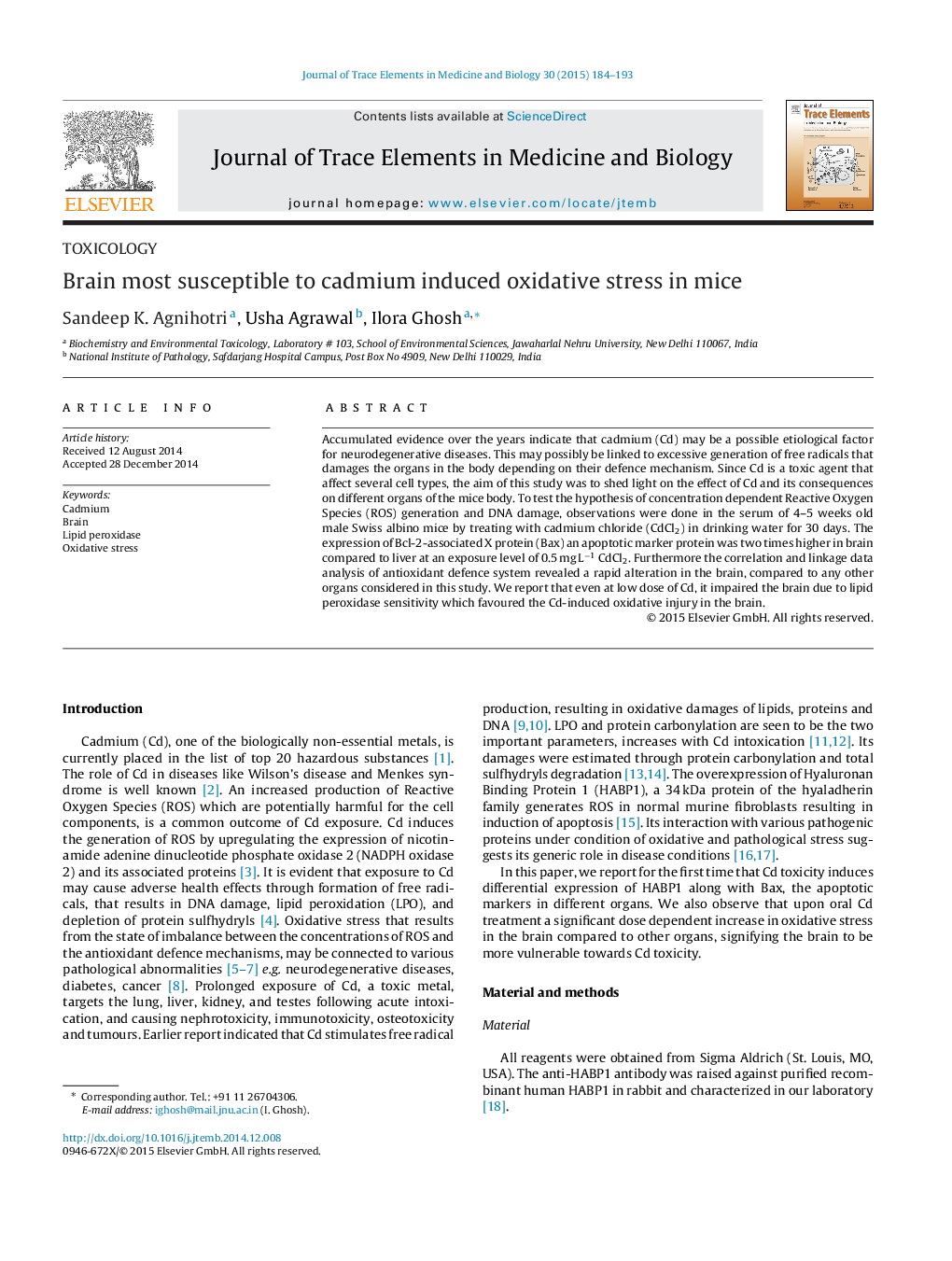| Article ID | Journal | Published Year | Pages | File Type |
|---|---|---|---|---|
| 1226374 | Journal of Trace Elements in Medicine and Biology | 2015 | 10 Pages |
Accumulated evidence over the years indicate that cadmium (Cd) may be a possible etiological factor for neurodegenerative diseases. This may possibly be linked to excessive generation of free radicals that damages the organs in the body depending on their defence mechanism. Since Cd is a toxic agent that affect several cell types, the aim of this study was to shed light on the effect of Cd and its consequences on different organs of the mice body. To test the hypothesis of concentration dependent Reactive Oxygen Species (ROS) generation and DNA damage, observations were done in the serum of 4–5 weeks old male Swiss albino mice by treating with cadmium chloride (CdCl2) in drinking water for 30 days. The expression of Bcl-2-associated X protein (Bax) an apoptotic marker protein was two times higher in brain compared to liver at an exposure level of 0.5 mg L−1 CdCl2. Furthermore the correlation and linkage data analysis of antioxidant defence system revealed a rapid alteration in the brain, compared to any other organs considered in this study. We report that even at low dose of Cd, it impaired the brain due to lipid peroxidase sensitivity which favoured the Cd-induced oxidative injury in the brain.
